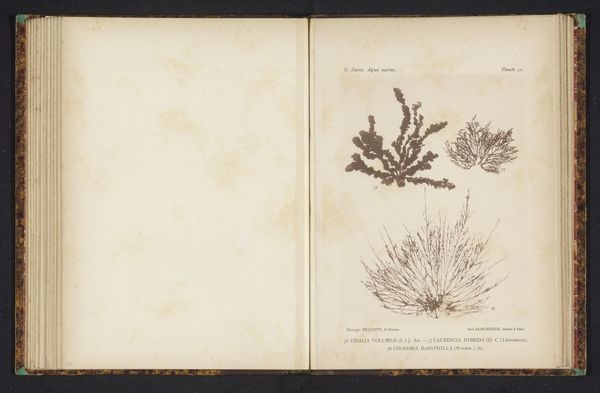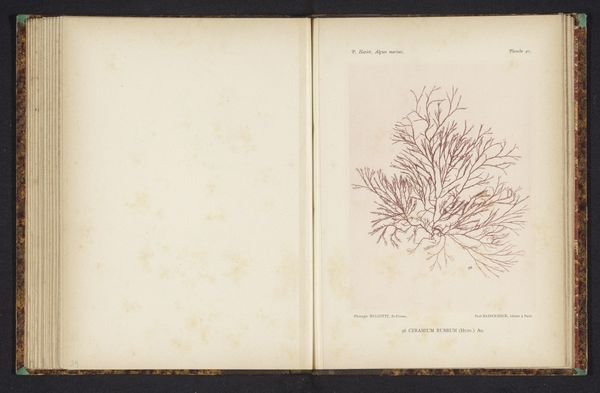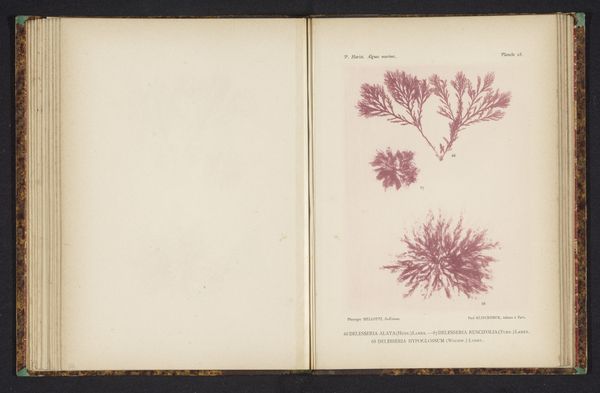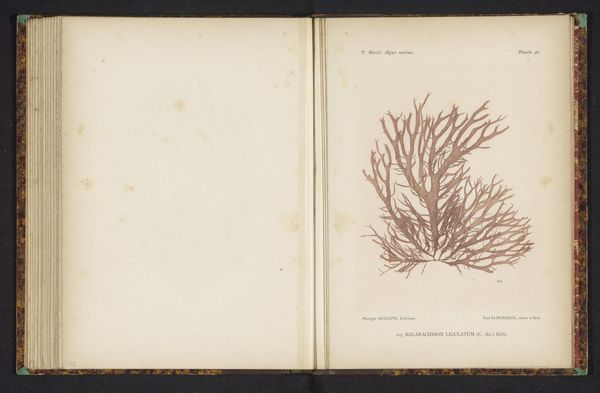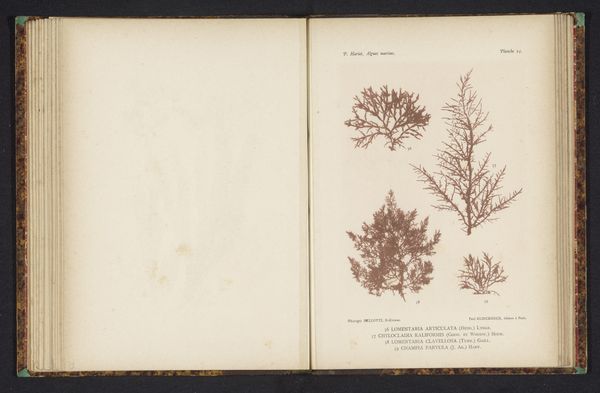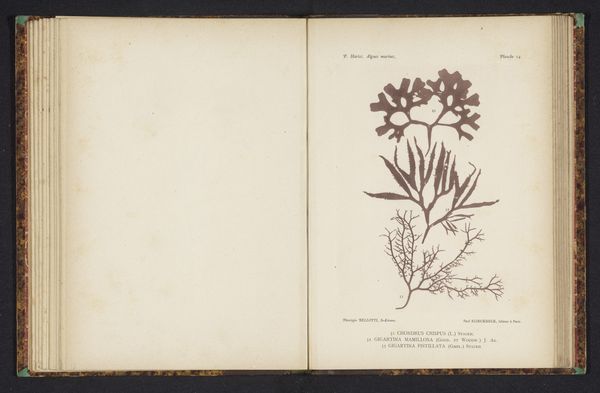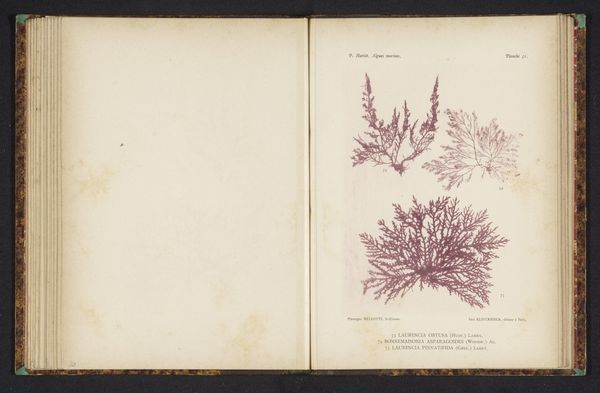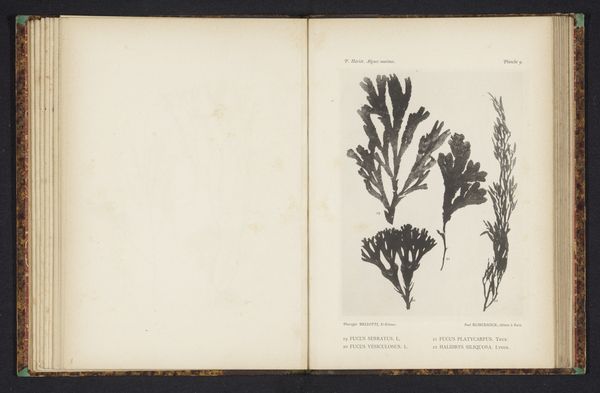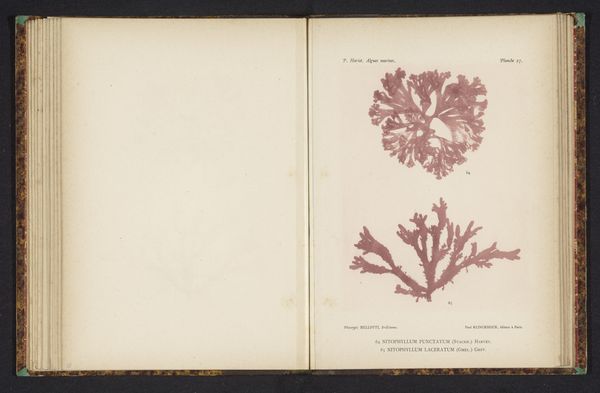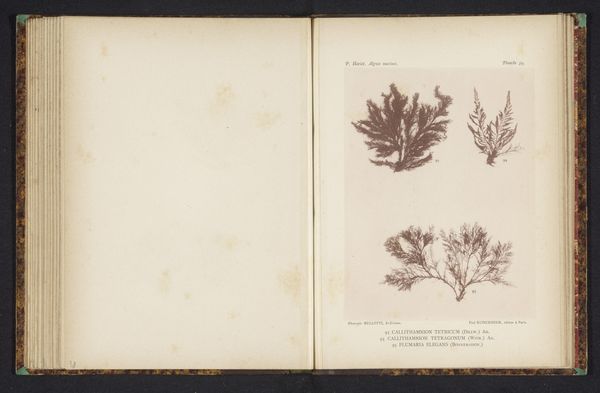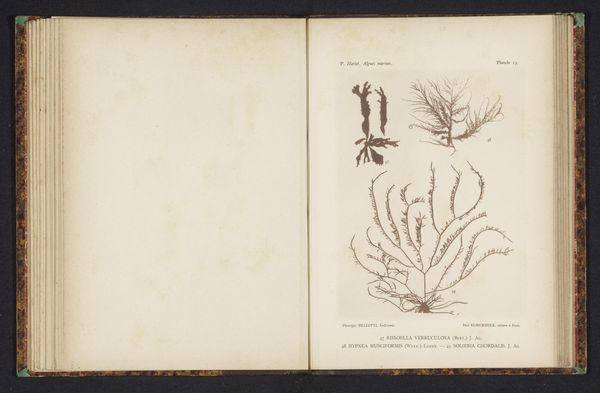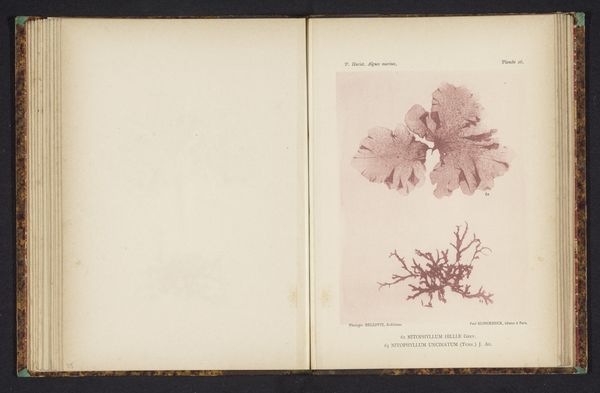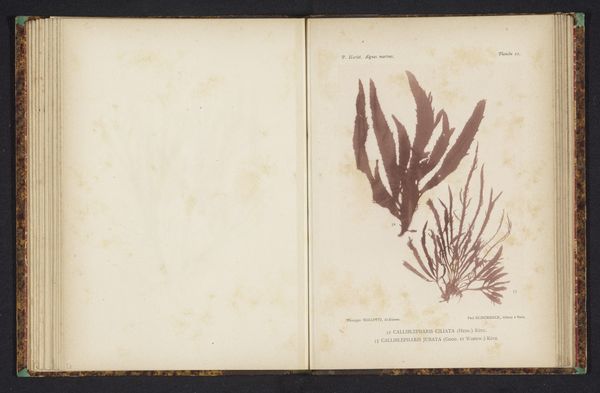
drawing, print, ink, graphite, engraving
#
drawing
# print
#
ink
#
coloured pencil
#
graphite
#
engraving
#
botanical art
#
realism
Dimensions: height 161 mm, width 119 mm
Copyright: Rijks Museum: Open Domain
Editor: Here we have "Vijf soorten zeewier," or "Five Types of Seaweed," created before 1892 by an anonymous artist, using a combination of drawing, printing, and ink techniques including engraving and graphite. I’m immediately drawn to the delicacy of the lines, especially since they are printed. How do you interpret this work? Curator: You know, it tickles me pink! Imagine someone, centuries ago, painstakingly rendering seaweed—seaweed!—with such detail. What compels them? What whispered from the ocean that they had to capture in ink? I find myself wondering about the impermanence they're battling. Seaweed is fleeting; does the permanence of the page defy nature's ephemerality? And do you think that is still important for us, now? Editor: That’s a beautiful idea – cheating time through art. I also notice it’s not just artistic; there’s a scientific element, almost like a catalogue entry with the text underneath. Curator: Precisely! A dance between science and art, yes? Perhaps it was to offer an enduring glimpse into nature’s hidden chambers. Now tell me, does seeing them like this – organized, categorized – steal some of their oceanic wildness or highlight it, for you? Editor: I think it gives them a kind of scientific dignity. I wouldn’t think twice about seaweed on the beach, but now I am seeing the detail that maybe the artist noticed too. Curator: Oh, splendid! A dignity conferred by observation, you see. Perhaps, in truly seeing these humble forms, we glimpse not just their beauty, but a part of ourselves. Isn't that what art is all about? Editor: I never thought of it that way, but that's a wonderful point. I’ll definitely be thinking about this next time I’m at the beach.
Comments
No comments
Be the first to comment and join the conversation on the ultimate creative platform.
